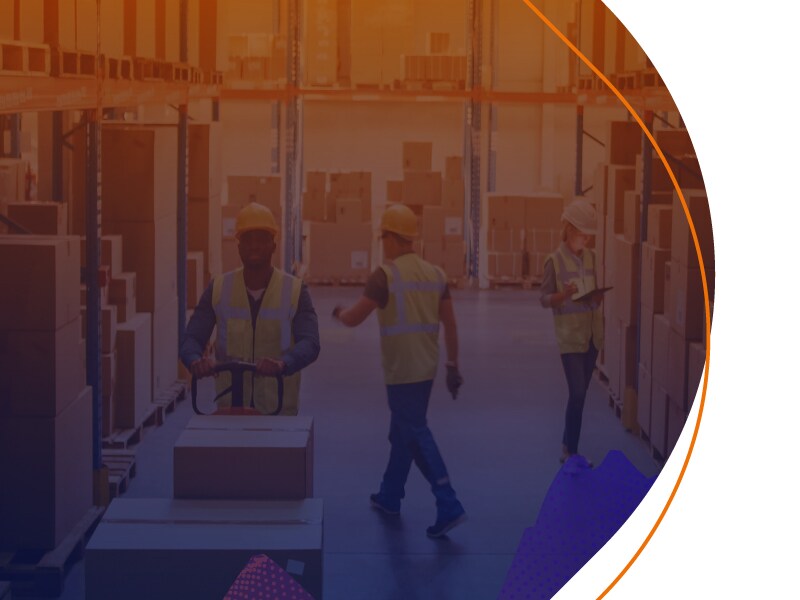Home > AssistEdge > Blogs > Supercharging Spot Bid Freight with Robotic Process Automation
Supercharging Spot Bid Freight with Robotic Process Automation

Shippers and carriers alike have driven massive savings from optimizing transportation, primarily through the deployment of technology such as Transportation Management Systems (TMS). TMS systems are a mature set of applications with impressive track records of automating and optimizing transportation functions. This reduces freight costs in the supply chain for both shippers and carriers and increases the overall effectiveness of the supply chain.
The list of TMS value drivers is long and impressive:
More than anything else, advanced transportation technology has enabled collaboration and coordination of multiple entities who work in a shared, networked transportation ecosystem that includes not only shippers and carriers, but also freight brokers, logistics service providers, hubs, and ports.
However, despite significant advancements in transportation technology and widespread deployment, carriers and shipper still employ large teams of people to manage freight. Many functions still (and probably always will) require constant human interaction, especially those that deal with exceptions and require human decision-making as to how certain shipment or freight situations should be handled. Many transportation functions still rely on managers or analysts to monitor portals and work cohesively with technology to keep operations running, especially functions requiring data entry, approvals, reporting, or exception management.
Robotic Process Automation for Transportation
These human-driven transportation functions have created opportunities for layering in addition automation technology such as Robotic Process Automation (RPA) to further reduce the need for manual work. Transportation and Logistics are now mirroring what other business organizations are doing by deploying digital robots to handle TMS functions currently performed by humans.
Some examples of TMS functions that can be driven by RPA include:
In general, the marriage between RPA and TMS can be cohesive and beneficial if done in a technologically and functional, smart, and responsible way, enabling another level of automation within the transportation domain.
Dealing with the Growing Spot Market
Carriers, freight brokers, and logistics service providers have a unique and increasingly opportunistic challenge related to TMS technology and the enhancements offered by RPA. Most carriers have a split between their contracted freight and spot bid freight (contract freight is more regular shipments done at pre-agreed terms and pricing; spot bid freight is bid in real-time). While this varies widely by market, location, and mode, many analysts put the typical split between contracted and spot freight at 85/15.
However, the COVID environment of the last 18 months has affected all things supply chain, including the amount of volume and capacity on various lanes. This has also affected the split between contract and spot freight for many carriers, mostly by skewing the spot freight to as much as 75/25.
While not the primary source of revenue, spot freight is a critical piece of business for carriers. But it is also the least optimized in terms of process, efficiency, and technology. Bidding on spot freight requires carriers to deploy teams to monitor freight bidding portals from shippers, monitor what loads are available to bid, and make decisions on what to bid and for how much. Because not all shippers use the same TMS, carriers often have to perform functions across multiple portals and make time-critical decisions in direct competition with other carriers. Conversion rates for many carriers in the spot bid process are very low, often less than 10%.
The good news is that the transportation function is an area that has seen some of the most significant improvements in terms of automation, reduced human effort, and revenue conversion using RPA technology.
Spot Bidding using RPA
Any use case that involves the consolidation of data from multiple portals, rapid analysis of information, and automating data entry tends to be a good use case for RPA. Automating the spot bid process for carriers falls directly into this category.
Carriers today are finding that they can use RPA bots to monitor the spot bid portals from multiple TMS systems from multiple shippers. These bots can also aggregate spot bid opportunities that come in from other sources, like email or EDI. Once aggregated, carriers have the option to present the aggregated list to transportation analysts or use business rules to allow bots to automatically bid on the best loads that meet certain criteria.
The results can be dramatic once carriers use RPA to consolidate spot bid opportunities and automate the bidding process. Not only are the manual human hours eliminated, but carriers immediately start bidding on more loads and more of the right loads at better prices. This more centralized and holistic approach increases their spot bid conversion rate and the revenue and margins of this business segment.
Learn more about AssistEdge Spot Bid, our best-in-class automation solution for all bidding activities.
This assisted automation use case at carriers is growing in popularity as RPA bots are expected to ‘auto bid’ on $100Ms of freight in the coming year. This will drive more revenue and margin for carriers, and better match shipper freight with transportation providers, improving the overall network.


Glenn VanLandingham
Vice President & Global Head – Solution Consulting, EdgeVerve
LinkedIn
More blogs from Glenn VanLandingham >